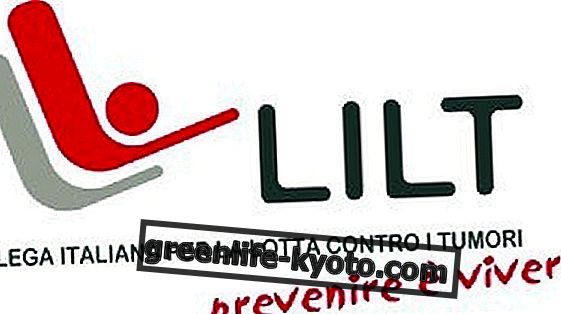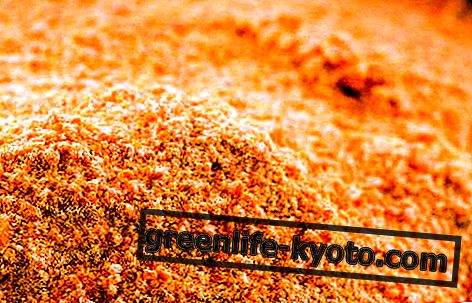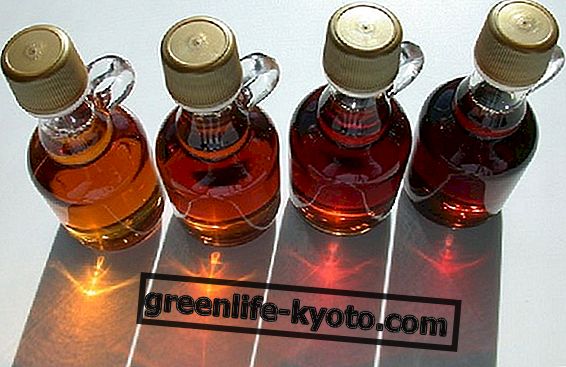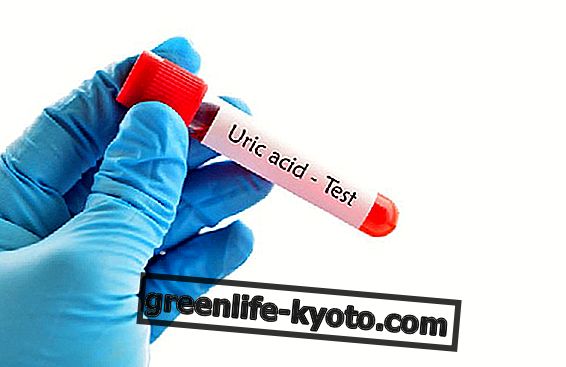
That mind and body are closely connected is a notion that has always belonged to man, but in more recent times the knowledge of the biological mechanisms through which this continuous interaction takes place has enormously increased.
Epidemiological studies
Various studies have found that psychosocial factors have an influence on health. In general, an association is established between them and the onset and course of infectious diseases, in particular respiratory diseases; this is understandable since every depressive, even mild and temporary state depresses the immune defenses and the respiratory system is obviously very exposed to viruses and bacteria. We have seen that in the separated and divorced there is a greater incidence of various diseases and tumors than in the married and that the experience of loneliness, the death of the spouse, the separation are followed by an immune depression.
On the contrary, having social relationships experienced as positive and supportive has a beneficial effect on a series of acute and chronic diseases, but also on the outcome of pregnancies, on the possibility of accidents or suicide, on mortality from various causes and on behavior in case of illness. All this obviously points to an important relationship between psychosocial factors and physical health, between the psychological state of the person and the corresponding physical condition.
Anatomy and physiology
In talking about psychosomatics, we must obviously refer to the Nervous System and in particular to that part of it which is called Vegetative or Autonomous Nervous System (SNV or SNA). Vegetative because it innervates the vessels, all the internal organs and presides over the vital functions of the body (digestion, respiration, heartbeat, sugar and lipid metabolism, thermoregulation, arterial pressure, etc.); autonomous because it works without the intervention of the conscience and even less of the will. Eg the heart adapts autonomously the number of its own beats in function of the physical exercise, but this process like many others that regulate the functioning of the body takes place independently of the will and of conscious processes.
SNA is divided into two branches: the Sympathetic System and the Parasympathetic with each other antagonistic: for example. if the Sympathetic accelerates the heartbeats, the Parasympathetic slows them down and therefore the well-being and the correct functioning of the various organs and the body in general depends on their balance. The SNA has reflex centers at the spinal cord level but also higher centers that are located at the base of the brain that preside over complex activities such as water, thermal regulation, sleep, metabolism, arterial pressure, etc. The upper supplementary center of visceral activities is called hypothalamus.
It is a phylogenetically and anatomically much older structure than other areas that developed later and we therefore have in common with many lower animals on the hierarchical scale of evolution. The reason is obvious: it presides over the vital functions of the organism itself. The hypothalamus is also closely involved in hormonal regulation ; it is part of the pituitary gland which is the main gland of the body on which the secretion of various hormones, including thyroid, adrenal and sexual, depends. The hypothalamus is mutually connected to other areas of the brain, in particular to areas dedicated to the expression of emotions and instinctive behaviors, but also to some areas of the cerebral cortex.
The cerebral cortex is the seat of conscious processes and is the most recent part of the brain in the history of evolution, the areas of emotions and instincts are instead in most areas so to speak "intermediate" between hypothalamus and bark, both phylogenetically both anatomically. Emotions constantly activate the vegetative areas and in fact by definition the emotion consists of three components: a psychic component, a motor component and a vegetative component.
This complex anatomical picture therefore tells us how the VNS, although by definition "autonomous", is nevertheless closely in contact with the spheres of emotions and instincts and also with conscious processes. The mind-body connection finds the anatomical substrate in the fibers of the nervous system.
It should be added that many studies have also ascertained that the VNS is able to "learn" to react also to stimuli, so to speak, that are not natural, that is not related to the vegetative functions, when these stimuli are conditioned, that is, associated with a "natural" stimulus . Eg in Pavlov's experiments a dog spontaneously "salivated" to the sound of a bell ("conditioned" stimulus) if this sound had constantly preceded the presentation of food ("natural" or "unconditional" stimulus). This tells us that the VNS still has its own "logic" its "rationality" which is not that of the cerebral hemispheres, of our superior activities, but a logic more centered on the instincts of survival and finalized to the basic primordial activities that regulate life and the continuation of the species. Furthermore, it is likely that phenomena of " imprinting " or early learning have "conditioned" the VNS to react in certain ways that have been fixed tenaciously and almost indelibly.
Imprinting is a phenomenon studied in animals but most likely also present in humans and indeed in it for a longer period, given the enormously greater time it takes for a newborn to become an adult. In the studies on imprinting we have seen that what the animals "learn" in the hours immediately after birth (eg to identify the mother figure) remains throughout their life and that "distorted" and "not natural" learning (such as eg identifying the mother figure with a human being leads to behavioral disorders in adulthood. It is possible however, even if it is difficult to change the imprinting and this refers to the efficacy of psychotherapy.
The mind communicates and influences the soma also through the Immune System which is the body's main defense system in relation to external aggressors (viruses, bacteria, etc.), but also possibly internal (cancer cells). Recent research by Psychoneuroimmunology over the last 25 years has ascertained how the same substances that neurons use to communicate with each other are also used to communicate between nerve fibers and cells of the immune system. By virtue of this, reciprocal communications between mind and immune system are very close: we have seen for example. that a depressive experience, even mild and temporary, lowers the immune system, thus favoring infections such as respiratory or dental infections.
Stress and psychosomatic risk
Stress is defined as the non-specific reaction of the organism to each change request made on it. Specific because it has similar characteristics regardless of the type of stressful stimulus that caused it which can be physical (eg cold, or muscular effort) or emotional in nature. Obviously even a physical stress has a psychological representation and very often the emotional-psychological component in stress is predominant.
Stress sets in motion a characteristic hormonal reaction and is an adaptive response of the organism to cope with the stressful stimulus; if, however, this response is produced too intensely for long periods of time, its adaptive purpose fails, chronic stress is encountered and psychosomatic risk is increased . In fact, stress is always accompanied by a neuroendocrine and neurovegetative activation that becomes chronic in the presence of chronic stress, eg. when the individual fails to counteract the stressful stimulus. In this case the neurovegetative balance and the correct functioning of the organs of the body are permanently altered. It is obvious then that from prolonged functional alterations it is possible to pass to organic alterations.
The main factor in determining the psychosomatic risk seems to be the lack of possibility of behavioral discharge of the emotional situation. In other words, if an effective behavioral reaction is inhibited or prevented, which can also be verbal, against the stressful stimulus, the neurovegetative activation remains with its set of symptoms that may favor one organ rather than another, as if the body continues to "Tell us" that behavioral activation would be necessary. This reflection leads us to consider the concepts of body language and human language in general.
Man has two types of language: verbal language and non-verbal language . The first concerns words, has the advantage of being very clear and unambiguous in its meanings and the disadvantage of offering an easy possibility of lying. In other words, if I say that a table is "white" it is very clear that he said "white" and not another color, but it is still possible that I lied. Non-verbal language is the body language that normally accompanies verbal language and consists of gestures, mimicry in posture, etc .; with it, unlike the verbal one it is almost impossible to lie because it is a language linked not to the cognitive contents elaborated by the cerebral cortex, but to the emotions, to the attitudes. However, it is not as "clear" as the verbal one: in fact it is difficult to interpret the "why" a person can be frowning or smiling; it could be for a multitude of different reasons.
Our hypothesis, and not only mine of course, is that even the symptoms of the body that no longer works properly, the symptoms of vegetative and psychosomatic disorders are body language . With them, in fact, the body manifests itself, the neurovegetative activation in stress pushes towards, and continues to vicarre if it does not happen, the behavioral response that can resolve the stress itself. Neurovegetative symptoms therefore have an implicit meaning closely connected to the stressful situation.
Clinical experience also teaches that very often the choice of the organ that falls ill is not accidental, but is connected on a functional level with the psychological or psychosocial theme related to the stressful event or situation. In other words, a violent rage at work will easily affect the stomach with hyperacidity, since the hydrochloric acid secreted by it is certainly the most aggressive substance in the body and this datum fits well with the experiences of aggression almost certainly present at following the anger. In asthma, on the other hand, the person is literally "suffocated" by too much air in the lungs that fails to come out due to the stenosis of the bronchi and it is noted that often children suffer from overprotected children, perhaps unique for whom the attention of parents is excessive, "suffocating".
It is normal that in many cases, childhood asthma disappears as the "release" phase normally begins in this period and the process towards the autonomy and independence of the child from the family of origin accelerates. It could be continued with other pathologies even if it is to say that the vulnerability to infectious diseases seems to depend on a specific decrease of the immunity defenses as a result of stressful situations, of intrapsychic conflict, or of depressive states.
Psychotherapy for Psychosomatic Disorders
In Psychotherapy of Psychosomatic Disorders the Psychologist will obviously always deal only with the psychological stress that is upstream of the disorder, a factor or possible cofactor of the pathology, and therefore of the related psychological or psychosocial theme. We are therefore dealing with “psychological issues” which as such can be treated with the common psychotherapeutic tools used to treat other predominantly psychic disorders and which affect the physical sphere less, such as phobias, depression, etc. .. At a resolution of the psychological stress obviously follows the resolution of the symptomatology that it maintains.
Rarely in the Psychotherapy of Psychosomatic Disorders is the client required a heavy behavioral commitment (with reference to the behavioral activation mentioned above when talking about stress); very often a cognitive restructuring of the experience of the stressful situation is sufficient, or to show the person the situation from another angle of view, in another light. Other times it is sufficient to bring to consciousness the unconscious conflict or solicit easily achievable behaviors.
The techniques of Brief Strategic Psychotherapy and Gestalt can therefore also be used for Psychosomatic Disorders. Both approaches allow short therapies: the Strategic approach succeeds in a considerable percentage of cases in obtaining the "healing" or the resolution of the presented problem, as one wants to call it, within a maximum of ten sessions or in less fortunate cases at least the "release" ”Of the symptomatology, that is a meaningful unhinging of it. We can say that this approach fits into the cognitive-behavioral vein, but represents a further evolution.
The Gestalt, on the other hand, was conceived by a student of Freud who detached himself from it to elaborate an autonomous and quite different approach from Psychoanalysis. The Gestalt is well used even faster than the Brief Strategic Therapy as it reactivates, through dramatization techniques, the topic of interest during the session and brings it to resolution.
Writing task for health
Further proof of how much the mind affects the body and how positive and "healing" psychological processes can improve physical health is given by the existence of a simple writing task that has been experimentally proven to improve health physics of those who performed it, compared to a control group.
This task, which requires 15-30 minutes a day for four days, is centered on writing emotionally relevant content; it is evident therefore that an elaboration of significant psychic contents improves physical health. In fact, at least in healthy subjects, Psychotherapy has been shown to obtain results similar to this writing task.
In summary, those who perform this simple task in the following year go less to the doctor, do less analysis, experience less pain and have an immune system that works better, in short, it is better in health than those who do not.
Psoriasis study
A scientific study on the psoriasis of Valentina Sciubba et alii has led to the conclusion that psoriasis is in almost all cases an "environmental stress" disease, that is to say that in it the psychosocial stress factors are very relevant.
The environment is perceived by the patient to be psoriasis as highly stressful in most cases; a small percentage of patients perceive it as insufficiently welcoming and protective, which if we want seems to be the other side of the coin. In 70% of cases a stressful event was detected in the two months preceding the onset of the disease.
In the study involving 33 patients, 21 of them benefited from a brief counseling and psychological support, from 3 to 8 interviews, without the use of specific psychotherapeutic techniques such as those of the Strategic and Gestaltic approaches. Nevertheless, in a return questionnaire, 77% of patients stated that counseling had improved psychological well-being and 55% that the quality of family and social relationships had improved.
The physical symptomatology was judged as unchanged in 50% of the cases and improved in 44%. Given the lack of application of specific psychotherapeutic techniques, the results are encouraging. On the other hand, a recent experiment in which the psychologist was present in the general practitioner's office during visits to patients appears to have saved a very considerable amount in the annual pharmaceutical expenditure prescribed by the doctor. Also this experiment highlights how a simple attention (and therefore the more psychotherapy can do!) To the psychological aspect of the patient is good for his physical health.













